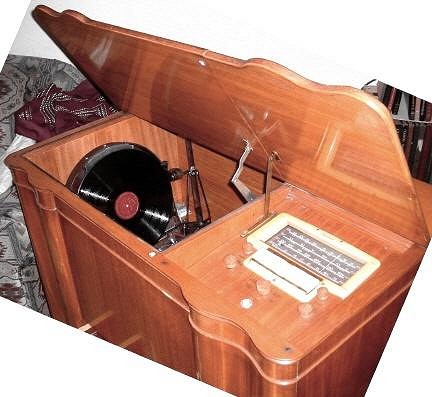Tiki Central / Tiki Music / What Kind of Music was Played in Old Tiki Bars and How They Did It.
Post #500950 by Sabu The Coconut Boy on Sun, Dec 27, 2009 1:34 AM
|
STCB

Sabu The Coconut Boy
Posted
posted
on
Sun, Dec 27, 2009 1:34 AM
Nowadays you go into a tiki bar like Trader Vic's or Don The Beachcomber and if you're lucky, there will be some nice ambient Exotica music playing on the CD system. In other bars, like the Purple Orchid and the Kona Club, a CD jukebox will offer a variety of vintage music like Surf and 50's Rock and Swing which creates a different mood, but still reinforces that feeling of escapism to a different era. But what did they do in the days before CD players? Well, we know that a lot of tiki restaurants had live music. We know this from record albums recorded Live at these restaurants and ads in weekly entertainment publications, like "The Playgoer", in major cities that listed the bands and singers and small combos playing at restaurants like the Latitude 20 and the Hawaii Kai. Most of this music seemed to be Hawaiian or Hapa Haole in style, but since dancing was an integral part of the dining experience, I bet these Hawaiian bands played a lot of standard dance music too. Postcards show that most of these Polynesian Restaurants had dance floors as well as stages for the musicians. Dancing was popular when South Seas bars started in the 30s, and was still popular in the tiki restaurants of the 60s. The house band at the Hawaiian Room in New York's Emerson Hotel even re-wrote classic Hawaiian melodies to give them a dance beat so that you could fox-trot or swing to them. The larger restaurants even had Hawaiian Floor Shows, with hula dancers and all. But what happened when the musicians weren't playing? And what about the smaller bars and restaurants that didn't have live acts? Was background music as important back in the old days as it is today? If it was, how did they accomplish it? Going through the old ads from these restaurants, you occasionally catch a reference to "Hawaiian records" being played for atmosphere. But frankly, this seemed like a pain in the neck to me. Did they have an employee assigned to flip the records when they were done? I know what a chore it can be for me to get up to flip records during a dinner party at my house. That must have been a tiresome task all night long at a tiki bar. Then I recently read a four-page review of Don The Beachcomber in Hollywood, written in 1943. It gave a lot of the small, intimate details of the restaurant, including this passage: "There is no orchestra at The Beachcomber, and no floor show. Only a dignified Capehart, playing subdued South Pacific melodies." This was fascinating, but I had no idea what a Capehart was. So I looked it up on the internet and this is what I discovered: The Capehart was the ultimate in luxury record players of the time. It was an amazing piece of techno-gadgetry mounted in an elegant wooden cabinet.
"The fabulous Capehart Deluxe home radio-phonographs of the 1930s and 1940s. These instruments used a wonderful record changer designed by Ralph Erbe, and this changer was unequalled for features in its time. In addition to being able to play 10" and 12" records intermixed, this ingenious changer would also turn each record over. It could turn each record over immediately, so that the B side could be played following the A side, or it could turn the record over as it returned it to the stack, thereby placing it in position to play the opposite side the next time the record came through the stack." It could store sixteen 78rpm records and play all 32 sides before it stopped. It was, in effect, the CD-player of its day. If you go to this Website you can even watch a short movie of the flipping mechanism in action. So when you realize that Don's had exotic Hawaiian records playing in the background, mixed with their periodic manufactured rainstorms that were so realistic that first-time patrons often ran outside to roll-up their car windows, you can tell that this restaurant, at least, took their dining and drinking atmosphere very seriously. I'm betting other restaurants of the time had similar Capehart systems, but I'd be interested to find out how the background music was handled during the 50s and 60s. Did any of these tiki bars switch to jukeboxes when they became available or did they just upgrade to more modern multi-record-players? Let me know your thoughts and discoveries.
[ Edited by: Sabu The Coconut Boy 2013-05-03 18:15 ] |


